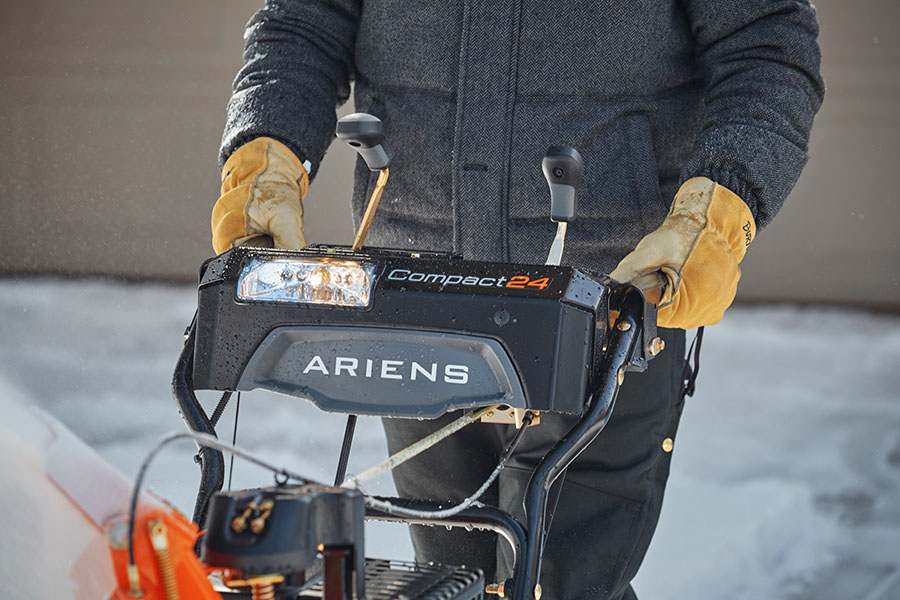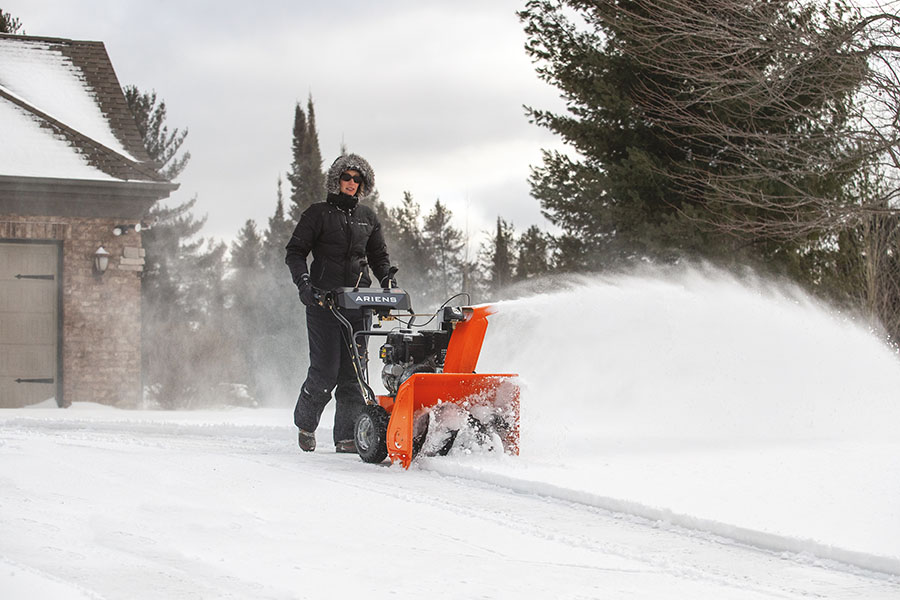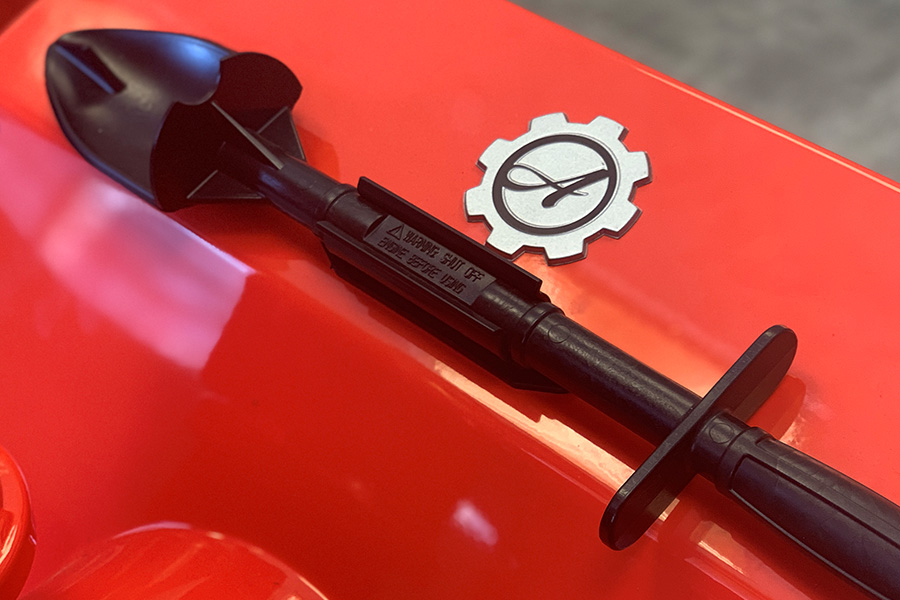How to Use a Snow Blower Safely
12/12/2019 6:00:00 AM
The best snow blower safety practices in 2019
As a family owned brand, Ariens® values the importance of our family members, which is why we understand your importance to your family members. That's why we want you to always follow safe practices when operating a snow blower or lawn mower.
The safety practices outlined in this post have some crossover application between both lawn mowers and snow blowers, but this post will focus strictly on snow blower safety. Though the content in this post isn't a substitute for the detailed list of safety rules outlined in the front of your Ariens owner's manual, it highlights the safety practices that should remain top of mind before using your outdoor power equipment.
Ariens reminds all its users to carefully read, understand and practice the safety instructions listed in the front pages of the operator's manual for your unit before operating your snow thrower.
Learning to use a snow blower
Not everyone is a pro right out of the gate. If you've never operated a snow blower before, first read the operator's manual for your unit from cover to cover to understand the characteristics and functions of all controls. With the unit turned off, learn how the operation of the clutch levers (on the handlebars) feels, as well as the discharge chute functions. Push down on the handlebars slightly to feel the weight of the machine and practice turning the machine from left to right.
When you feel ready, start the unit's engine according to the directions in the manual while in an open and clear area. Then, try driving the unit around without engaging the augers and the impeller. If you have more questions on how to operate your unit, stop by your nearest Ariens dealer and ask them for additional assistance.
How to clear snow from a driveway safely
Before the season starts, mark the perimeter of your driveway, sidewalks and other clearing areas with reflective, or highly visible stakes. This helps ensure you're clearing within the confines of a hard surface and not over any objects that could be ingested and thrown from your snow blower.
Additionally, consider anything that could be hidden beneath that blanket of snow that's now covering your driveway, sidewalk and other clearing surfaces. Did the kids play hockey in the driveway without picking up their equipment? Did fluffy leave a tennis ball outside? Or did the paperboy deliver this morning's issue before it started snowing?
Ice skates, hockey sticks, rocks, dog toys, frozen newspapers and other obstructions, if caught in your snow blower's auger and impeller, can both damage your unit and become dangerous projectiles when discharged.
In short, survey the entire clearing area carefully before clearing it with a snow blower.
Children and snow blowing
Children are intrigued by power equipment. They like seeing the activity up close, and some parents want to offer them that experience. However, having children outside while you're using a snow blower is unsafe, regardless if they're within or away from the clearing area.
As an operator, your attention is devoted to the chore, as it should be. That means it's not on those who wander into the clearing area, making it possible for pets and small children who enter the clearing area to be unseen, and unheard over the engine noise. That risk is even greater when blowing snow and nighttime operation greatly reduce your visibility.
Don’t allow anyone under the age of 18 operate outdoor power equipment and keep all children and pets away from all outdoor power equipment while operating. Children and pets are to always be kept indoors and under the watchful eye of a responsible adult when operating your snow blower.
What to wear when blowing snow
Never operate a snow blower with any clothing articles that could be caught in moving parts. Always wear snug, tight-fitting clothing and tie back long hair. Additionally, wear clothing that's adequate for the season. There's no sense risking hypothermia or frostbite over a clean driveway – even if you have a snow blower with heated hand grips.

Quality winter boots with good traction, goggles and hearing protection are also required when operating winter outdoor power equipment. Though the Ariens engineers do their best to make quiet snow blowers, no outdoor power equipment with an internal combustion engine is quiet enough to skip earplugs or earmuffs. Prolonged exposure to noise as quiet as 85 decibels, which is the noise level of a vacuum cleaner, is enough to cause hearing loss.
Moral of the story is that though some machinery may seem quiet enough, it could still be loud enough to damage hearing over time. No matter how tough you think you are, nobody is immune to hearing loss risk factors, so always wear adequate hearing protection when operating a snow blower.
Always wear protective eyewear. Even simple plastic protective goggles can help prevent eye injury from a rogue ice chunk, stone or piece of asphalt that flies in the direction of the operator. Glasses don't cover your eyes completely, so if you have prescription lenses, use a pair with side shielding when snow blowing.
For the greatest amount of protection, comfort and visibility while throwing snow, consider a pair of ski goggles.
Throwing snow in a safe direction
There's no doubt there's a special satisfaction that comes from throwing a fresh snowfall up to 50 feet from where it landed. It's hard not to get caught up in the elation, but it's important to be mindful of where that discharge is directed.

Besides light, fluffy snow, a snow blower ingests nearly anything in its path, including small rocks, ice chunks and other hazardous items that can turn to projectiles if they make their way into a snow blower impeller. That's why it's important to always aim the discharge chute in a safe direction away from people and property. Additionally, never throw snow higher than necessary.
Practice situational awareness
Pause occasionally to scan the clearing area while snow blowing. If you spot something concerning, such as a child or pet that came into view, an obstruction you didn't see before or the abominable snow beast, stop the engine, remove the key from the unit and wait for all moving parts to stop before leaving the operator's position and correcting the situation.
Staying alert is especially important when operating near a roadway, whether it's busy or not. We've all seen news stories of emergency and maintenance workers struck by distracted or impaired drivers when stopped on a roadway. And if a driver can't see flashing emergency lights during a dry summer day, there's little chance they'll see you in the roadway during a blizzard at nighttime, even if you have a bright orange snow blower with a headlight. Always operate with caution near roadways.
Never operate a snow blower under the influence
Even after just one drink. Being under the influence of alcohol or drugs is never acceptable when operating machinery, including small outdoor power equipment. Full alertness is a requirement. The slightest feelings of impairment, even if caused by prescription drugs, affect your alertness in the work area. If you're not 100%, leave the snow blowing to someone who is.
Clearing clogs from a snow blower
Wet and heavy snow conditions can create clogs in a snow blower discharge chute, requiring the need to clear that clog. The first rule when clearing a clog from your snow blower is to never use your hand to unclog a snow blower. Attempting to clear a snow blower clog with your hand can result in injury.
Though there are steps you can take to help prevent a snow blower discharge chute from clogging, like using Ariens Snow-Jet non-stick polymer coating, clogs happen. If your snow blower is clogged, follow these steps before going any further:
-
STOP THE ENGINE.
-
Remove the key from the ignition.
-
Wait for all moving parts to stop.
After those three items are complete, and ONLY after those items are complete, remove the clean-out tool from the top of the auger housing and use the clean-out tool to clear the clog. If a clean-out tool is broken or absent, use another suitable device such as a broomstick to clear the clog. Just remember, that no matter what the case, Ariens reminds you to never use your hand to clear a clogged discharge chute, even after the engine is stopped.
After the clog is removed safely, return your clean-out tool to its holder, restart the engine and resume work.

Follow your Ariens owner's manual
For a detailed list of safety instructions, review the snow blower safety information in your operator's manual. Ariens reminds you to review the safety section located in the front pages of your Sno-Thro® operator's manual often. A paper copy of the operator's and the engine manual is included with every unit, but if your manual was misplaced, you can click here for a free digital download of your operator's manual.